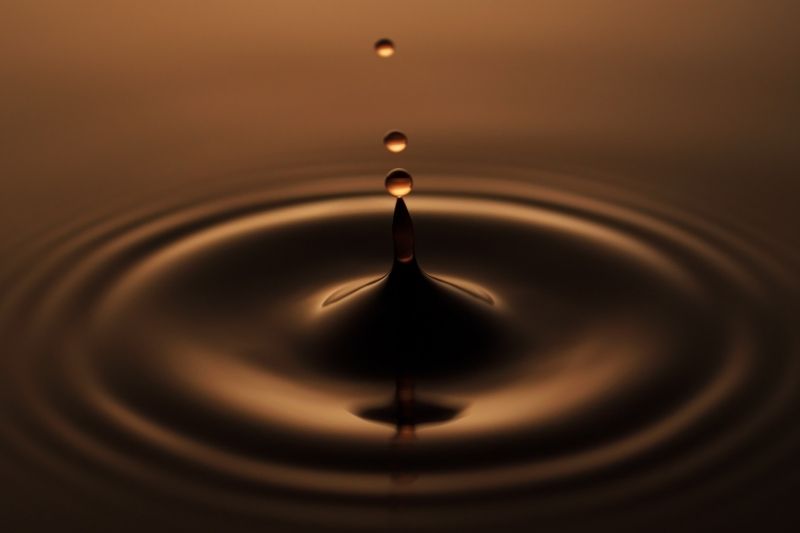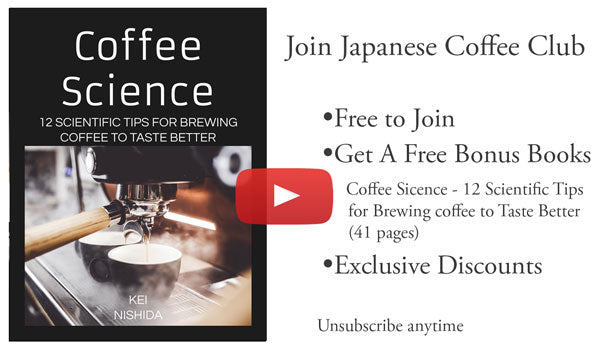For many, coffee is the kick-starter to get along in the morning. Definitely for all of us early birds too. It is precisely for this reason that many people are puzzled by the term “decaffeinated coffee” or are wondering why would anyone prefer coffee without caffeine.
Well, it all started back in 1903. The Bremen coffee trader and founder of “Kaffee HAG”, Ludwig Roselius, attributed his father's death in part to excessive coffee consumption.
Thereupon he developed the Roselius process named after him - in which he first soaked the whole beans in saltwater to swell and then extracted the caffeine from the bean with the help of benzene. Since benzene is now considered carcinogenic, this process is of course no longer used.

However, as years went by, more and more decaffeination processes started appearing, like the Direct Solvent Process, the Carbon Dioxide Process, and the Swiss Water Process.
Today we are going to take a close look at the Swiss Water Process and explain everything that happens to the coffee bean during decaffeination when using this method.
How is decaffeinated coffee made today?
Roselius was the pioneer in the field of decaffeinated coffee, but unfortunately, his process was harmful to health. Over the decades, however, many new and, above all, better processes have emerged around the world.
These decaffeination processes are gentler on the coffee beans, which improves the quality and taste and, above all, there is no health risk for the consumer.
Even if there are several processes with different approaches, they all have one thing in common: to make decaffeinated coffee, green coffee beans are used that have not yet been roasted.
Two categories of decaffeination
There are two categories of decaffeination, the one that uses solvents and the one that doesn’t. Generally, when decaffeinating with solvents, the beans are first introduced to hot water or steam.
The caffeine is then extracted with a solvent, depending on the method used. This step is repeated several times in order to reach the EU caffeine limit for decaffeinated coffee of a maximum of 0.1%.
Unfortunately, with these processes, part of the typical taste disappears with caffeine. The Swiss Water Process is a decaffeination method that doesn’t use solvents.
Swiss Water Process
In this process, developed by the Swiss Water Decaffeinated Coffee Company in the late 1970s, the first step is to soak the beans in hot water until all of the caffeine and other solid components have been dissolved.
The beans from this first step are disposed of. Then, the water with the dissolved caffeine and other coffee components runs through an activated carbon filter, which retains the caffeine molecules.

New coffee beans are added to the now decaffeinated water in a similar filter device. Since the water is already enriched with dissolved coffee components, this time only the caffeine is dissolved, and the other taste-determining ingredients of the coffee beans are retained.
The process is repeated until 99.9% of the caffeine has been removed, because decaffeinated coffee may contain a maximum of 0.1% caffeine. The beans are then dried and should retain a large part of their taste and aroma.
Advantages and Disadvantages of the Swiss Water Process
Like with everything there are both benefits and drawbacks to using the Swiss Water Process for decaffeination purposes:
Advantages
- No use of toxic chemicals or additives
- It’s a simple process
- The taste remains unchanged
Disadvantages
- The relatively high cost, since the caffeine bound with the activated carbon cannot be recovered and sold separately. Today there are only a few plants in the world that work with the Swiss water process.
- Not particularly environmentally friendly. On the one hand, green coffee is used, which is then disposed of and can no longer be used. On the other hand, a lot of water is required
Decaf coffee is becoming increasingly popular
Basically, coffee fans love coffee, in addition to its taste, due to the stimulating effect that comes from caffeine. Caffeine is like a small legal drug and, as with everything, there can be a “too much” aspect of it.
For example, some people cannot tolerate caffeine or drink coffee in the evening for fear of not being able to fall asleep. In these cases, decaffeinated coffee is a great alternative that is becoming increasingly popular.
Just as an example, decaffeinated coffee has become more and more popular in Italy over the past 10 years, and in 2014 it accounted for a trading volume of 539 million euros. In Italy, the decaffeinated espresso is usually referred to as "Decaff" (from decaffeinato) and is traditionally associated with the light blue color on the packaging.

Caffeine is a natural substance
In nature, caffeine is a defense substance to deter predators. The coffee cherry stores most of its caffeine in the coffee cherry, i.e. the pulp around the coffee beans. So if an enemy eats the cherry, they get many times more caffeine than we do with a cup of espresso.
Resourceful food developers have therefore already developed teas from the dried pulp. So if you really need or can tolerate a lot of caffeine, you should treat yourself to such a tea.
Anyone who tries to reduce their caffeine consumption or the chlorogenic acid, which not everyone can tolerate so well, does not necessarily have to resort to decaffeinated coffee products.
Since robusta beans contain a lot of caffeine and chlorogenic acid, it is advisable to use arabica as they contain less of them. So if you want coffees that are naturally low in caffeine, you should buy 100% Arabica blends.
Decaffeinated is not always caffeine-free
Coffee beans whose caffeine content has been almost completely removed are referred to as decaffeinated coffee. The residual caffeine content in the EU must not exceed 0.1%. The beans that have been deprived of caffeine are therefore not one hundred percent caffeine-free. It is therefore similar to alcohol-free beer because the alcohol content is not reduced to 0% there.
Final Thoughts
There are many different reasons for choosing decaffeinated coffee: intolerance, high blood pressure, pregnancy, fear of not being able to sleep, etc. They all have one thing in common: not wanting to do without the taste or the feeling of drinking coffee.
One thing should be clear to everyone: There is currently no naturally decaffeinated coffee. Coffee without caffeine must always go through an additional process step. Ultimately, everyone has to decide for themselves whether decaffeinated coffee is the right thing to do.
It is important that all coffee suppliers transparently disclose the type of decaffeination they use. If you value decaffeinated coffee and want very good quality and an exciting taste, you are welcome to visit our online shop.
Get Free Bonus Books

Sign up for free to the Japanese Coffee Club to get advice and exclusive articles about how to choose Japanese Coffee, and tips, tricks, and recipes for enjoying Japanese coffee.
























